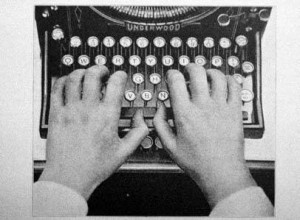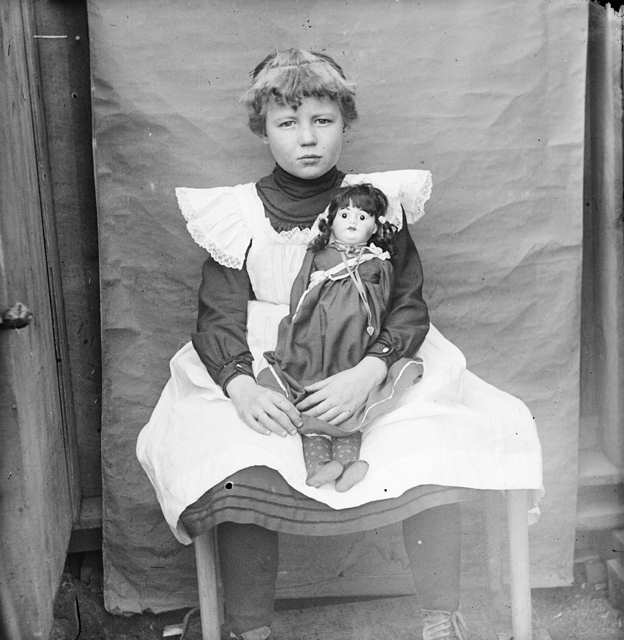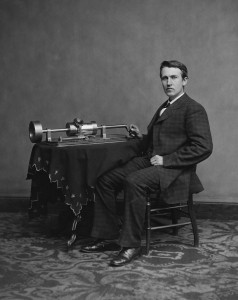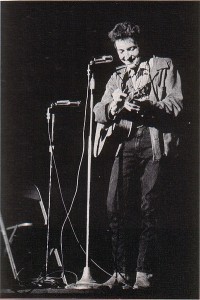A few search engine keyphrases that brought traffic to Afflictor this week:
You are currently browsing the yearly archive for 2011.
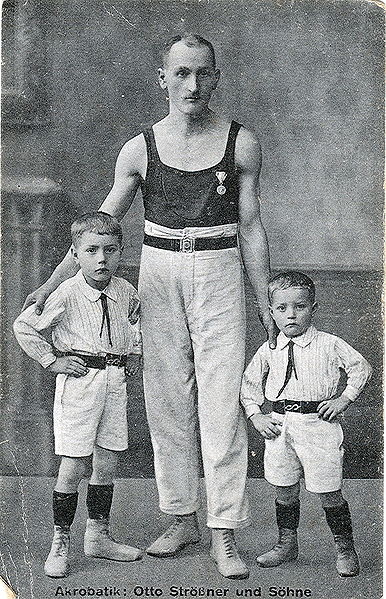
Afflictor: Exchanging sharp looks with that arrogant acrobat--you know the one--and his two jackass sons since 2009.
- Classic DVD: The Passenger (1975).
- Old Print Articles: Oscar Wilde gets dissed on Long Island (1882) + Ragged urchin steals from slot machine (1891) + Hungry Joe, king of bunco (1889) + Wife leaves twine merchant, takes furniture (1899).
- Featured Video: Monkey waiter wearing lady mask + Werner Herzog profiles televangelist Gene Scott (1980) + Andy Warhol dines on Burger King (1982) + Early Steve Jobs TV appearance + Robot marathon in Japan + Los Angeles Love-In (1968) + Helmet shaves man’s head + Girl with orange on LSD + Robot orders scone in California + Flesh-eating furniture + A four-year-old in Haight-Ashbury (1970) + Estonian punk choir sing-along + Pet hippo uses the kitchen + British man thinks he’s standing on hen’s eggs (1974) + Boarding a train in Myanmar + Artist Holton Rower makes colors flow + Whitey Ford and Salvador Dali commercial (1970s) + Ginormous touchscreen in the Netherlands + Robot made from balloon and coffee grounds.
- Classic Photographs: NYC elevated train goes off the tracks (1905) + Final NYC horse-drawn carriage (1917).
- Recently Posted on NYC’s Craigslist: Butt plug in “good condition” + You give me enema, I give you stuff to sell on eBay + Someone’s ragging on Dan Callahan + Performance artist with poitive outlook needs trampoline + Selling jumpy rhino iguana + Collecting weird crap + Selling clown painting + I need a box of bricks.
- A shocking exposé about the Lyman Family cult (1971).
- Richard Preston profiles the eccentric NYC math geniuses, the Chudnovsky brothers (1992).
- Future futurist Ray Kurzweil plays the piano on TV (1965).
- Detroit needs a RoboCop statue.
- Inventor and sci-fi legend Hugo Gernsback predicts the future (1963).
- New Journalist Grover Lewis recalls his parents’ gruesome death.
- The dark side of Washington D.C. party clown the Great Zucchini.
- Nutjob Arthur Jones revolutionized the exercise industry.
- Ron van der Ende’s hyperrealistic wooden sculptures.
- Calvin Trillin profiles police reporter Edna Buchanan (1985).
- Bob Dylan refuses to answer a question (1966).
- Happy 164th birthday, Thomas Edison!
- An 1898 note about doll hair.
- The greatest work of Jacob Riis.
- The colorful graveyards of England.
- This week’s Afflictor keyphrase searches.

Gregory Chudnovsky (pictured) and his brother, David, are Distinguished Industry Professors at NYU's Polytechnic Institute. (Image by Gregory Chudnovsky / NYU.)
The first two paragraphs of “Mountains of Pi,” Richard Preston’s excellent 1992 New Yorker account of eccentric math geniuses, the Chudnovsky brothers, and their home-built supercomputer:
“Gregory Volfovich Chudnovsky recently built a supercomputer in his apartment from mail-order parts. Gregory Chudnovsky is a number theorist. His apartment is situated near the top floor of a run-down building on the West Side of Manhattan, in a neighborhood near Columbia University. Not long ago, a human corpse was found dumped at the end of the block. The world’s most powerful supercomputers include the Cray Y-MP C90, the Thinking Machines CM-5, the Hitachi S-820/80, the nCube, the Fujitsu parallel machine, the Kendall Square Research parallel machine, the nec SX-3, the Touchstone Delta, and Gregory Chudnovsky’s apartment. The apartment seems to be a kind of container for the supercomputer at least as much as it is a container for people.
Gregory Chudnovsky’s partner in the design and construction of the supercomputer was his older brother, David Volfovich Chudnovsky, who is also a mathematician, and who lives five blocks away from Gregory. The Chudnovsky brothers call their machine m zero. It occupies the former living room of Gregory’s apartment, and its tentacles reach into other rooms. The brothers claim that m zero is a ‘true, general-purpose supercomputer,’ and that it is as fast and powerful as a somewhat older Cray Y-MP, but it is not as fast as the latest of the Y-MP machines, the C90, an advanced supercomputer made by Cray Research. A Cray Y-MP C90 costs more than thirty million dollars. It is a black monolith, seven feet tall and eight feet across, in the shape of a squat cylinder, and is cooled by liquid freon. So far, the brothers have spent around seventy thousand dollars on parts for their supercomputer, and much of the money has come out of their wives’ pockets.”
Tags: David Volfovich Chudnovsky, Gregory Volfovich Chudnovsky, Richard Preston
From Geekersmagazine: “Scientists from Cornell, the University of Chicago and iRobot have created human-analogue hands using nothing but coffee grounds, party balloons and a vacuum pump.”
A lot of you have been requesting I post something from 1898 about doll hair, so here’s a note from the Brooklyn Daily Eagle of that year:
“The hair on the heads of most of the hundreds of thousands of dolls exhibited in shop windows is made from the hair of the Angora goat. This product is controlled by an English syndicate, and is valued at £80,000 a year. After the hair is prepared it is sent to Munich and made into wigs by girls.”
An existential thriller set in languid deserts and brisk airports, Michelangelo Antonioni’s drama quietly and gradually stalks the truth, right down to its pitch-perfect, remarkably understated conclusion, which is one of the most analyzed scenes in film history. An afterthought when it was released, The Passenger is now rightly recognized as one of the masterworks of the ’70s.
Journalist David Locke (Jack Nicholson) finds himself deep in the Sahara desert wrapping up a documentary about a revolution whose horrors he can barely begin to fathom. Complicating matters are his own personal demons, which seem equally inscrutable. All Locke knows is that he wants out of his life, that he desires to throw away the baggage of all that he’s become. The reporter gets the opportunity when an acquaintance named Robertson, who is staying at the same dusty, no-star hotel, dies suddenly, presumably from a heart attack. Their ages and faces are similar, so Locke switches places; he’s the one who is announced as deceased and he’s reborn as Robertson.
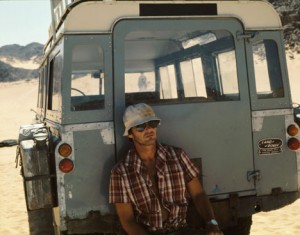 But a second act can be tricky and not just because it soon becomes clear that Robertson was dealing arms to a band of rebels. While Locke knows he has no way of fulfilling his end of the munitions contract, which could imperil his life, he has another problem: Freedom from his old self makes Locke realize that angst and anxiety weren’t particular to just him. He dutifully follows Robertson’s agenda book and is diverted, if briefly, in Munich where the erstwhile journalist meets an architecture history student (Maria Schneider) who’s willing to impetuously go along with him on his road to nowhere.
But a second act can be tricky and not just because it soon becomes clear that Robertson was dealing arms to a band of rebels. While Locke knows he has no way of fulfilling his end of the munitions contract, which could imperil his life, he has another problem: Freedom from his old self makes Locke realize that angst and anxiety weren’t particular to just him. He dutifully follows Robertson’s agenda book and is diverted, if briefly, in Munich where the erstwhile journalist meets an architecture history student (Maria Schneider) who’s willing to impetuously go along with him on his road to nowhere.
Pursued from city to city by an ever-growing cabal of people who want to meet the mysterious Robertson, Locke, who had hoped to become nothingness, instead has only multiplied his being. In one scene, Locke’s automobile breaks down in the middle of the desert and he screams furiously at the universe, “Alriiiight!” signaling his defeat. As if the outcome was ever in doubt.•
Tags: Jack Nicholson, Maria Schneider, Michelangelo Antonioni
The stylus would be the size of a telephone pole. (Thanks Reddit.)
Baseball pitcher Whitey Ford and timepiece melter Salvador Dali shill for Braniff during the 1970s.
Tags: Salvador Dali, Whitey Ford
As we clasp hands and celebrate Thomas Edison’s birthday today, here’s a note about his modest beginnings in the December 1, 1898 issue of the Brooklyn Daily Eagle:
“When Thomas Edison was a boy he made a set of working telegraph instruments, not covering a small envelope in size, in his spare time. He fixed this on a line connecting the station at which he was at work and the town, using tenpenny nails for insulators; and in dry weather the tiny telegraph company worked very well, though things were apt to go wrong in rainy seasons. During the first months Edison and a boy friend who ran the line netted 31 cents from their venture–not a large amount, but enough to show that the instruments were of some use.”
Tags: Thomas Edison
Holton Rower uses many paint colors + gravity. (Thanks Open Culture.)
Tags: Holton Rower
In the aftermath of his controversial shift from folk musician to rock star, Bob Dylan took the art of the non-answer to illogical but entertaining extremes during a 1966 Playboy interview, conducted by Nat Hentoff:
“Playboy: Mistake or not, what made you decide to go the rock-‘n’-roll route?
Bob Dylan: Carelessness. I lost my one true love. I started drinking. The first thing I know, I’m in a card game. Then I’m in a crap game. I wake up in a pool hall. Then this big Mexican lady drags me off the table, takes me to Philadelphia. She leaves me alone in her house, and it burns down. I wind up in Phoenix. I get a job as a Chinaman. I start working in a dime store, and move in with a 13-year-old girl. Then this big Mexican lady from Philadelphia comes in and burns the house down. I go down to Dallas. I get a job as a ‘before’ in a Charles Atlas ‘before and after‘ ad. I move in with a delivery boy who can cook fantastic chili and hot dogs. Then this 13-year-old girl from Phoenix comes and burns the house down. The delivery boy – he ain’t so mild: He gives her the knife, and the next thing I know I’m in Omaha. It’s so cold there, by this time I’m robbing my own bicycles and frying my own fish. I stumble onto some luck and get a job as a carburetor out at the hot-rod races every Thursday night. I move in with a high school teacher who also does a little plumbing on the side, who ain’t much to look at, but who’s built a special kind of refrigerator that can turn newspaper into lettuce. Everything’s going good until that delivery boy shows up and tries to knife me. Needless to say, he burned the house down, and I hit the road. The first guy that picked me up asked me if I wanted to be a star. What could I say?
Playboy: And that’s how you became a rock-‘n’-roll singer?
Bob Dylan: No, that’s how I got tuberculosis.”
Tags: Bob Dylan, Nat Hentoff
Singularity enthusiast Ray Kurzweil is profiled by Lev Grossman in a Time piece entitled, “2045: The Year Man Becomes Immortal.” In the article, the futurist predicts that the singularity–that moment when artificial intelligence surpasses human intelligence–will occur in 2045, which seems very ambitious. Grossman recalls that in 1965 a teenage Kurzweil appeared on the TV show I’ve Got a Secret to perform a piano piece composed by a computer he built.
Tags: Lev Grossman, Ray Kurzweil
SEEKING FEMALE WHO BUYS AND SELLS ON THE INTERNET (QUEENS)
or goes to flea markets etc. i am in need of someone who can help me out about once or twice a month with the following:
1. administer an enema and a full body deep tissue massage.
in exchange for these services i will swap various things that you can sell. this will be a permanent situation and i have quite a bit of things. each visit you can pick a certain amount of things to sell. the 2 treatments take about 3 hours. if interested please leave contact info. thank you kindly.
 The opening paragraph of “Covering the Cops,” Calvin Trillin’s outstanding 1986 New Yorker profile of police reporter and mystery novelist Edna Buchanan:
The opening paragraph of “Covering the Cops,” Calvin Trillin’s outstanding 1986 New Yorker profile of police reporter and mystery novelist Edna Buchanan:
“In the newsroom of the Miami Herald, there is some disagreement about which of Edna Buchanan’s first paragraphs stands as the classic Edna lead. I line up with the fried-chicken faction. The fried-chicken story was about a rowdy ex-con named Gary Robinson, who late one Sunday night lurched drunkenly into a Church’s outlet, shoved his way to the front of the line, and ordered a three-piece box of fried chicken. Persuaded to wait his turn, he reached the counter again five or ten minutes later, only to be told that Church’s had run out of fried chicken. The young woman at the counter suggested that he might like chicken nuggets instead. Robinson responded to the suggestion by slugging her in the head. That set off a chain of events that ended with Robinson’s being shot dead by a security guard. Edna Buchanan covered the murder for the Herald—there are policemen in Miami who say that it wouldn’t be a murder without her—and her story began with what the fried-chicken faction still regards as the classic Edna lead: ‘Gary Robinson died hungry.'”
Tags: Calvin Trillin, Edna Buchanan, Gary Robinson
This is how I caught the F this morning.
Alan Taylor, the amazing photo editor who ran the Boston Globe‘s Big Picture, has moved on to the Atlantic to create a new photo blog called “In Focus.” Unsurprisingly, the new site is already outstanding. Current photo series provide stunning images of the Egyptian revolution, America’s extreme winter weather and Afghanistan. These are topics being covered in a million places, but Taylor manages to bring a different perspective to the ubiquitous.
Tags: Alan Taylor
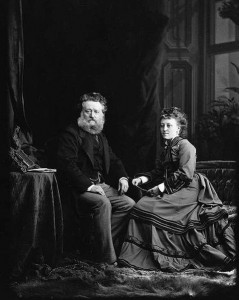
"Mr. Smith is in comfortable circumstances. He is about 35 years old. His wife is a fine looking woman, a few years her husband's junior, and was quite a favorite with other occupants of the flat house."
Mrs. Sarah V. Smith apparently had had enough. In 1891, she up and left her merchant husband and took just about everything with her. Mr. Smith was not amused. The Brooklyn Daily Eagle reported on the sorry domestic situation in its May 3, 1891 issue. An excerpt:
“Mrs. Sarah V. Smith, wife of Isaac N. Smith, a Duane street, New York, wholesale dealer of twine and wrapping paper, mysteriously disappeared from her home in the Kensington apartment house, at the corner of Throop avenue and Quincy street, on Thursday. Where she has gone or why she went away nobody on the premises seems to know. Mr. Smith, who did not know of the wife’s disappearance until several hours after she had vacated her apartments, is evidently as much in the dark regarding her motive in leaving as everybody else. The deserted husband unceremoniously left the premises on Friday morning–the day following his wife’s going away–and has not returned since.

"Isaac N. Smith, a Duane street, New York, wholesale dealer of twine and wrapping paper." (Image by Daniel Schwen.)
The Smith family had occupied the East flat on the second floor of the Kensington building for almost a year. Mr. Smith is in comfortable circumstances. He is about 35 years old. His wife is a fine looking woman, a few years her husband’s junior, and was quite a favorite with other occupants of the flat house. The couple have two children, aged 3 and 5 years respectively. On Thursday evening, according to a statement subsequently made by Mr. Smith, he started for business as usual, bidding his wife an affectionate good bye. At six o’clock that evening he returned home and was astounded to find upon entering his apartment the bulk of furniture and household belongings missing and nothing discernible of his wife and children. The carpets in every room of the house had been taken up and with the other fixings removed. About the only articles left were a framed picture of Mrs. Smith and a large Saratoga trunk containing Mr. Smith’s clothing. The mystified husband made anxious inquiries throughout the building relative to his wife’s disappearance, but obtained but little satisfaction.
The following advertisement, which has a direct bearing on the mystery, appeared in last night’s Eagle: ‘SMITH–TO WHOM IT MAY CONCERN: My wife SARAH V. SMITH, has left my bed and board without my consent and wishes, and I hereby forbid any person or persons from trusting her on my account. ISAAC N. SMITH.'”
The great Les Blank directed this short doc about a Los Angeles “Love-In” on Easter Sunday in 1967. Longhairs + Hell’s Angels. (Thanks Documentarian.)
Tags: Les Blank
Detroit may be down in the dumps, but the fine citizens aren’t letting Mayor Dave Bing‘s refusal to allocate funds for a RoboCop statue keep them from their dreams. They’ve begun a Kickstarter campaign to raise the necessary cash. (Thanks MLive and Reddit.) An excerpt:
“None of us have ever made a giant solid metal permanent sculpture before. It turns out to be a pretty expensive process (who would have thought?), but not too much for the world to fund. After talking to numerous sculptors and metal workers, the current game plan is this: We can take a relatively small figure of RoboCop (conceivably even an action figure), have it 3D scanned by lasers (cool!) and scale its form to create a light-weight model of any size we’d like, which can then be used to pour and cast liquid metal.”
Tags: Mayor Dave Bing
From Aaron Saenz on the Singularity Hub: “Robots have barely learned how to walk, but Vstone is already pushing them to run. The Japanese robot research and manufacturing firm has announced it is putting together the world’s first marathon for our mechanical offspring. The Robot Challenge will have bipedal bots racing around a 100m track for 422 laps either remotely controlled or operating completely autonomously by following a painted line.”
Tags: Aaron Saenz
Taken in 1917, this photo shows the end of the line for horse-drawn trams in New York City, as the changeover to electric cars (the streetcar on the right, for example) was all but complete. The caption contained with this public domain image reads as follows: “Just before the last of these vehicles was banished from the streets of New York City, the photographer snapped one of them as it passed alongside a ‘Modern Electric Car.’ This photo was shot on Broadway just north of the intersection with Broome Street. The car is headed southbound.”
At this point, electric and steam-powered vehicles were still predominant in America, with the gas-guzzler taking a back seat. An excerpt from a post on reliableplant.com about automobiles in the United States in the year this photo was taken:
“It’s hard to believe, but 38 percent of vehicles in the U.S. were electric in that year; 40 percent were steam powered and only 22 percent used gasoline. There was even a fleet of electric taxis in New York City.
But between the limited range of EVs and a lack of infrastructure to support recharging, the market was crying for a new and cheaper source of auto power, and that came in the form of the internal combustion, gasoline-powered engine.”
Don’t ever try a stunt like this while wearing long pants. You’ll pull a groin. (Thanks Crunchy.TV.)
I recently came across “The Lyman Family’s Holy Siege of America,” David Felton’s excellent 1971 exposé of Mel Lyman’s Massachusetts-based commune/cult. An erstwhile jug band musician, Lyman became convinced he was the messiah after dropping acid a few too many times with Timothy Leary’s Boston acolytes. His unbridled egomania would have been scary even if he hadn’t admired Charles Manson so much.
I was only familiar with the cult because as a fan of Michelangelo Antonioni’s flawed but fascinating 1970 drama, Zabriskie Point, I read somewhere that the film’s intense young leads, Daria Halprin and Mark Frechette, were members of the Lyman Family. But they had a lot of company at the commune when it came to intensity. A chilling excerpt from Felton’s piece:
“We believe that woman serves God through man,” said Lou, an attractive former nun now in her first stage of pregnancy. ‘I was sort of into women’s lib before I came up here, you know, “cause so many men are such piss-ants, such faggots. But when I came up here and started serving them breakfast, I really began looking up to them.”
She shoved a spoonful of strained vegetables into the squirming infant on her lap.
“The men here on the Hill are real men; the men out there are faggots, with their long hair and everything. If they weren’t, they wouldn’t let their women get away with the things they do.”
Lou learned about the true role of women from something Mel wrote in the Avatar. “If a woman is really a woman, and not just an old girl,” wrote Mel, “then everything she does is for her man and her only satisfaction is in making her man a greater man. She is his quiet conscience, she is his home, she is his inspiration and she is his living proof that his life, his labors, are worthwhile.
“A woman who seeks to satisfy herself is the loneliest being in God’s creation. A woman who seeks to surpass her man is only leaving herself behind. A man can only look ahead, he must have somewhere to look from. A woman can only look at her man…I have stated the Law purely and simply. Don’t break it.”
Not that anyone does. Most of the Hill women, if they’re not holding down outside “female” jobs as waitresses or secretaries, spend their time cooking, sewing, cleaning house, tending the children and serving the men. They seem to do so with great relish, developing an almost worshipful attitude toward the men.
“I mean, couldn’t you feel it in those men at lunch?” asked Lou, “how strong they were? How simple. Life here is so simple. Of course, the more simple life is, the harder it is. Let me tell you, there’s a lot of hate and frustration up here. And pain.
“When I first came up here I was a bitch.’ Lou sneered at herself.
“A bitch, hah, that’s putting it mildly. I was a viper. I hated Mel Lyman, I hated everyone here. I resisted like hell. And the thing that shocked me was how much they still cared about me. I mean, with me my hatred was personal, ’cause I hated on such a low level. But they taught me how to hate on a higher level.”
Why did she first hate Mel? I asked.
“Because he was stronger than me. I guess I wanted to be God too. But finally I had to break down; he was so much stronger than me, I finally had to accept it.”
“Do you believe he’s God?”
“Yeah, in the sense that Jesus Christ came down on earth. But he’s dead, so Mel’s the son of God now.” As she said these last words, Lou raised her eyes in adoration toward a photograph of Mel on the opposite wall, the one on the cover of the Christ issue.
“When I first met Mel,” she continued, “it was really weird ’cause he was the most down-to-earth, easygoing guy I’d ever met. Until he looked at you, and then, oh God, his force just filled the room.
“Now I love him intensely, I’m his forever. I want to conquer the world for Mel. I get so mad at that world out there I want to kill, I want to shove Mel in their hearts. He’s the only one who knows how to deal with feeling, the feelings you have at the time, whether they’re love, or hate, or fear.”•
Tags: Daria Halprin, David Felton, Mark Frechette, Mel Lyman, Michelangelo Antonioni

